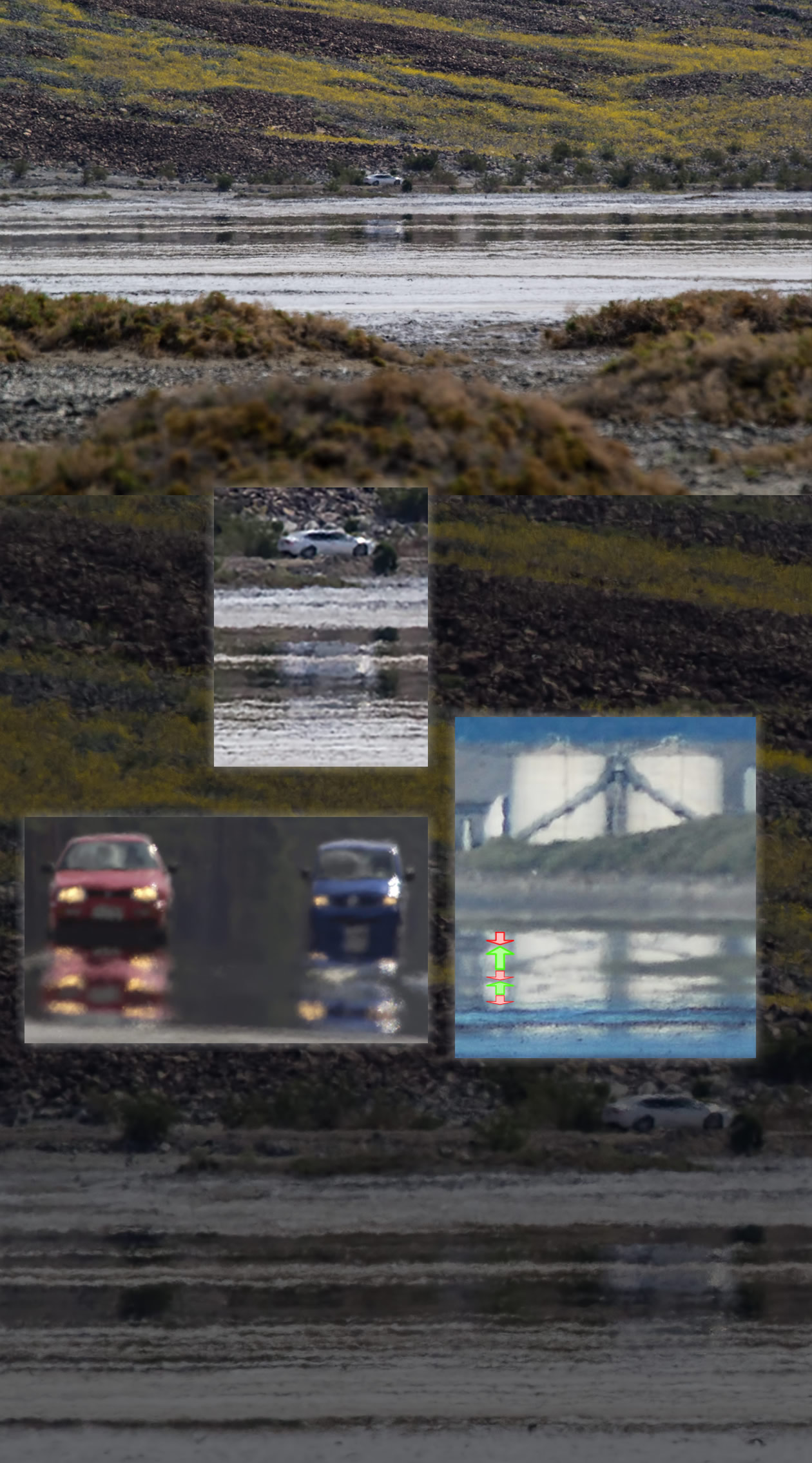


| About - Submit | Optics Picture of the Day | Galleries | Previous | Next | Today |
An almost ideal mirage is below. Oil storage tanks are miraged and we can tell the image orientations from the slope of the access steps. Inverted, erect,inverted and so on.
Even here, some images compress, others stretch.
Image by Mark Evans.